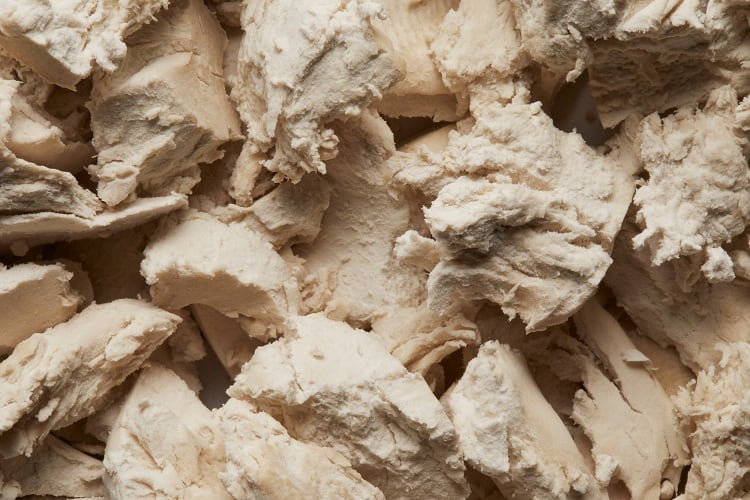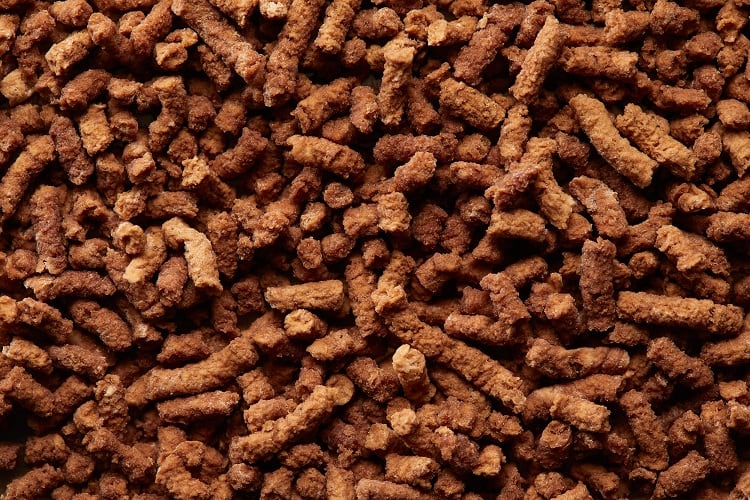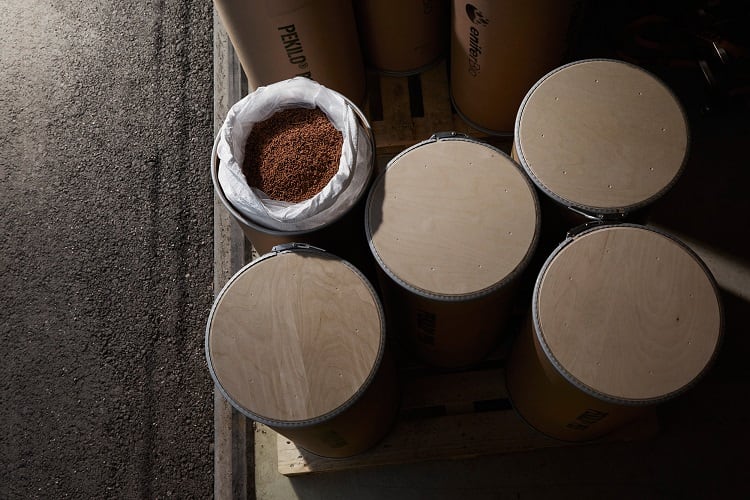The factory, according to Enifer, will have the production capacity of 3m kilograms each year, roughly the equivalent in protein of 30,000 cows. However, it will, the company suggests, emit 20 times fewer carbon dioxide emissions. It is expected to be completed by the end of 2025, costing around €30m to build, and will start production in 2026.
The funding came from the European Union’s NextGenerationEU and was approved by Business Finland. It was allocated for 'recycling and reuse investments' and will enable Enifer to build its factory. Using industrial by-products and waste streams, the factory aligns with the EU’s aims to create a circular economy.
A new mycoprotein product
The factory will be used to produce the company’s new product, a protein and fibre-rich mycoprotein-based powder with ‘neutral’ taste and colour. It plans to file for regulatory approval for this ingredient in the first half of this year.
“Compared to commercially available mycoproteins such as Quorn, (whose) wet and fibrous mycoprotein product is typically used in meat analogues, our food grade PEKILO is a dry powdery ingredient, sold for B2B and used in a similar way as plant protein concentrates and isolates as an ingredient in various food applications,” Joosu Kuivanen, Enifer’s co-founder and COO, told FoodNavigator.

“It is neutral in taste and colour while containing an adequate proportion of each of the nine essential amino acids. It also contains about 30-35% fibre, of which about half is fungal beta-glucan. Beyond the meat analogues . . . it can be used in pasta, bread, sweet baking and dairy alternatives.”
Dry, powdery mycoproteins are, Kuivanen stressed, quite novel in the European food landscape. “In Europe, The Protein Brewery develops somewhat similar ingredient(s) for food applications. However, they have their own process and fungal strain belonging to different species. So, it’s a bit like beef and pork in animal proteins.”
He envisions that “dry mycoprotein ingredients will become universal food ingredients similar to soy today.”
The PEKILO process
Enifer uses PEKILO fermentation to produce its mycoprotein. The “PEKILO process is a continuous submerged fungal fermentation. It means that the feedstock (i.e. industry by-product) is continuously fed into a bioreactor (stirred tank reactor) in which PEKILO fungus grows by eating the carbon sources of a by-product,” Kuivanen told us.
It is a continuous bioprocess, meaning that the grown PEKILO mycelial biomass is continuously harvested using energy effective mechanical solid-liquid separation in, according to Kuivanen, a process that ‘resembles the straining of fresh cheese.’ Afterwards, it is broken down and dried into mycoprotein powder.

The PEKILO technique has a long history, stretching back to the 1970s when it was developed by Finnish forest engineers as the first commercial mycoprotein production process. In its original form, the process used forest industry by-products to create feed protein. Now, Enifer has updated the technique to suit its own needs.
“In the original PEKILO plants, operated in Finland between 1975 and 1991, spent sulfite liquor, a liquid side stream from sulfite pulp mills, was used as feedstock for the PEKILO process. However, very few such pulp mills are still in operation. Therefore, we have further developed and optimized the PEKILO process to use several different by-products, not only from the forest industry. Basically, any by-product that is liquid (no solid material) and contains at least 2% carbon sources such as residual sugars, glycerol and/or organic acids that PEKILO fungus can eat could work.
“For the food grade PEKILO mycoprotein production we have optimized the process for liquid by-products from the food industry. For example, we can use lactose-containing permeates available as dairy industry by-products. Basically, all kinds of liquid food industry by-products could work.”
PEKILO fermentation is, according to Kuivanen, very different from the techniques used by mycoprotein giants such as Quorn. “In Quorn and many other mycoprotein fermentations the filamentous structure of the fungus, typically Fusarium venenatum, is harnessed to create the fibrous structure of the final product that is typically a wet mycoprotein to be delivered in a cold chain. In the PEKILO process, the filamentous structure of our proprietary strain, belonging to the fungus Paecilomyces variotii, is harnessed in extremely efficient continuous harvesting of the mycelial biomass from the process which is then broken down and dried into dry powdery mycoprotein ingredient that doesn’t need the cold chain.
“In addition, our PEKILO fungus is thermophilic, meaning the process is run at higher temperature (37°C) compared to the most other mycoproteins. This means less energy is needed for cooling the process.”
Rather than using pure sugars as feedstock, such as in ‘typical’ mycoprotein processes, PEKILO’s fungus has, according to Kuivanen, ‘very versatile capacity’ to use different carbon sources. Furthermore, very dilute by-products can be used as feedstock.
“This means that we can use very low value by-products which are difficult to valorise in other ways. Instead of optimizing the structure of the end product, the PEKILO process was designed to optimize the efficiency of the production and nutritional value in terms of digestibility and amino acid content due to the historical usage as land animal feed ingredient. This also means that the production costs of PEKILO are relatively low.”

Lowering water and land use
Because of the diversity of side-streams that can be used as feedstock, Enifer’s water and land use are ‘significantly’ lower than that of animal protein production. Their own land use is minimal, and most of the land use associated with the production process comes second-hand from the side streams.
“Some of the by-products, like permeates or vinasse, that can be used as feedstock in PEKILO process are actually often used as animal feed, in which case they are first concentrated i.e. water evaporated, after which they are fed to animals that are consuming large amounts of water in their lifespan. In our case, we use the by-product as liquid in our process and part of the water is even recycled,” Kuivanen told us.
Land use is lower simply because the plant’s area will be much smaller than the equivalent area of agricultural land needed to produce the same amount of protein in animal flesh.




